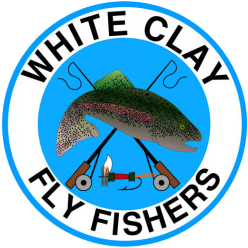“The Blue-winged Olives”
By Will Milliken
In this presentation we will look at the mayflies with the common name blue-winged olive. Both trout and fly fishermen love these widespread, diverse insects. We will look closely at physical traits and habits of this important family.
Speaker’s biography: Will Milliken
I am an amateur Entomologist, lifelong fisherman, and am currently the Facilities Manager for Stroud Water Research Center. I caught my first fish at 5 years old with my great uncle somewhere in MD. My paternal grandfather was a local fisherman on the Delaware Bay and Indian River inlet later in life. After my parents divorced, my father connected with me by taking me fishing in the local creeks (White Clay in Delaware to be exact) for trout. “They’re small fish and take corn on tiny hooks, but it should be fun!” he stated. We proceeded to meet with other “crazy” fisherman at Chamber’s Rock bridge at 3:00 am and fill a cooler with stockers every year. It was fun. I wet waded and for the first couple of years I used a one-piece bass rod that my Grandfather built for me.
My best friend and I took bait fishing to the highest level possible for teenagers over the next decade. We would go out with just our rods and a piece of bread. A dab of bread, hook a shiner on it and cast said shiner out for a Trout. That and “fetching” bait from under rocks. We ran into some older folks on our home waters, Big Elk creek, when we went to watch the stocking one day. They talked us into helping and later into joining their club. Big Elk Fly Fishers of Lewisville, Pa. We joined specifically to help stock so we would know where the “Big One’ went in. These guys would have none of us not learning to fly fish. The President owned the Golden Pheasant Tippet Fly shop in MD. and was retiring to Florida. He brought the remainder of his shop to our club house. They gave me a big trash bag and proceeded to fill it with all kinds of tying materials, an old Thompson Red knob vise and a pair of scissors. The lease started the next month. First the Wooley Bugger. This fly teaches most of the basics. Nymphs, Dry Flies, Wets, and Streamers. All the old school methods in the first year. They took me fishing and showed me the basics of casting. By the end of the second year, I was reading everything and even started showing them how to do some things.
“They had created a monster” one member stated after a few years. I never stopped learning. After I received a copy of Hatches, by Caucci and Nastasi, I started to learn the Latin names for the insects and the differences in insects that shared the same common name. When I was hired at the Research Center, I was given part time status in the Entomology Dept. I was able to look at larval forms under the macroscope and learned how to key them out to species level. Alas, I was not college educated and was not able to stay in that position with most of my skills being needed for Facilities maintenance.
I have been teaching the basics of stream entomology for the WCFF fly fishing class with my talk on “What Trout Eat”. John McMinn approached me with an idea to do a more refined talk on a seasonal or other basis. I see great potential for short talks, Power Point presentations, etc. providing that I can find enough time to complete them.
